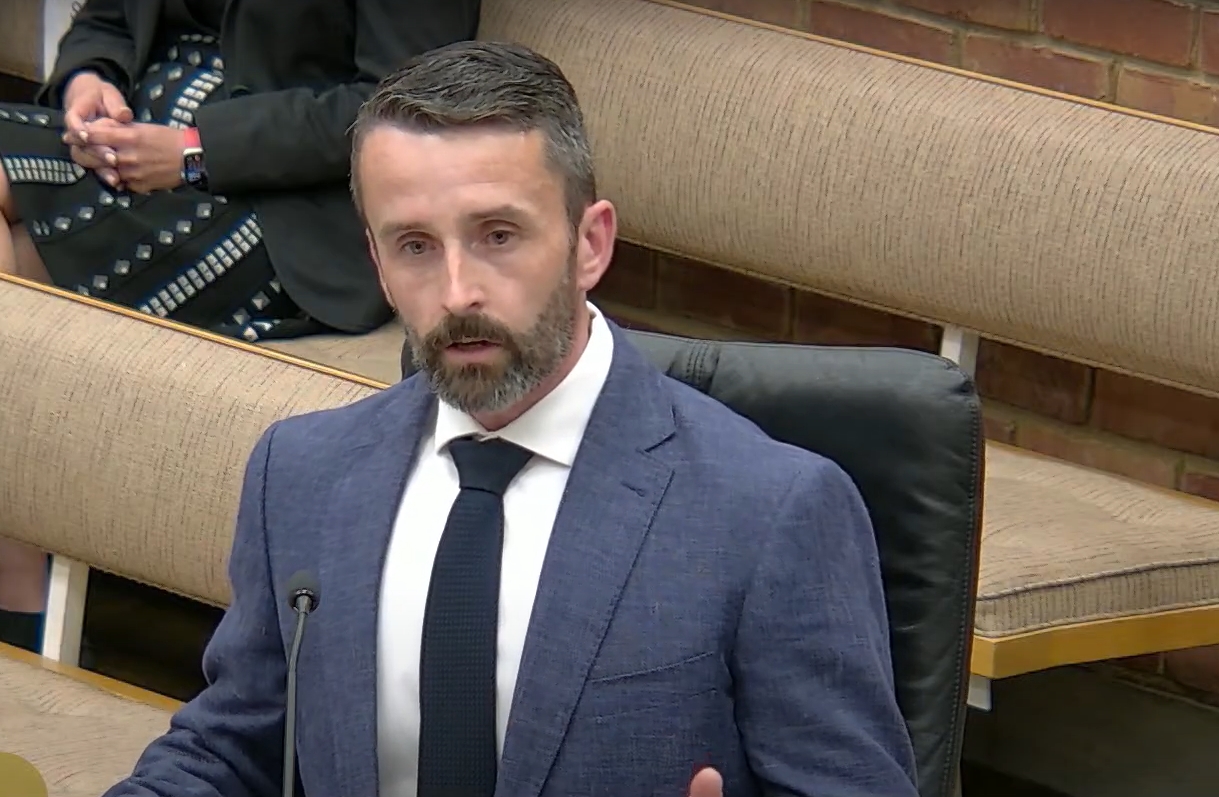
Los Gatos introduced its first-ever emergency manager at the town council meeting on May 20.
Chris Todd started his new job on May 12. He was previously emergency manager and continuity coordinator for NASA Ames Research Center, overseeing emergency preparedness programs and multi-agency training and exercises and helping develop plans to make sure the agency can continue working if disrupted. He also worked at Google and helped with their emergency management and crisis preparedness initiatives.
“I have a keen awareness of disasters and emergencies, particularly wildfire preparedness, and what could best suit the town and how I can help enable us for better preparedness and safety,” Todd said. “I really want to work to support the community and make sure that we’re as prepared as possible for any potential risks and mitigate the hazards as best as possible.”
Todd served in fire service for the U.S. Navy for 14 years before becoming a Cal Fire captain in the Santa Cruz Mountains. He specialized in wildland and all-risk incident management and has experience managing wildfire incidents and supporting response and recovery efforts throughout California. Todd has a master’s degree in emergency management services administration and is a certified emergency manager.
As the town’s emergency manager, Todd will help the town manager and council with wildfire preparation and prevention based on recommendations from the Wildfire Advisory Group. The group was formed by Mayor Matthew Hudes to provide advice and guidance on wildfire initiatives, prioritize them and figure out how much it would cost to implement and develop their recommendations. Members of the group presented their findings at the May 20 council meeting.
According to the group’s report, about 25% of the town’s total residences are located within the Wildland Urban Interface (WUI), an area that transitions from natural wildland to urban developments. Around 7,750 of the town’s total 32,773 residents live in this area.
“With the catastrophic fires in L.A., there’s a renewed motivation to address wildfire readiness with a new sense of urgency and resolve,” planning commissioner Rob Stump said at the meeting.
The Wildfire Advisory Group advised the town to focus on five safety initiatives in the event of a wildfire: emergency communications; evacuation plans and routes; fuel reduction and vegetation management; defensible space and home hardening; and education and outreach.
The group called for improvements to public mass communication within the next two years, like installing a local emergency broadcast system, deploying mobile surveillance and continuing to promote participation in AlertSCC, a mass notification system that sends emergency information to Santa Clara County residents. The total cost of these improvements over 20 years would be around $2.5 million.
Other priorities also included holding an evacuation simulation; removing flammable vegetation around WUI roadways, residences and open spaces; and promoting firewise communities and inspections for home hardening initiatives. Over 20 years, these initiatives would cost a little over $34 million.
Monte Sereno resident Allison Ziegler spoke on behalf of the Wildfire Advisory Group, saying that an evacuation plan should be developed and tested to make sure people can get out safely and quickly during an emergency.
“If Highway 9 is blocked, we have no other way out. Monte Sereno’s only evacuation routes are Highway 9 and Winchester (Boulevard),” Ziegler said.
Education and outreach would cost about $257,500, and other infrastructure projects such as extending mainline water service would cost around $6 million in the same time frame. The group’s initiatives would require an annual $2.2 million investment from the town over a 20-year span.
The group acknowledged that funding and staffing for the initiatives was limited and they would need to find funding sources beyond grants or the town and rely on paid and volunteer support. They also encouraged resident involvement and asked for collaboration and feedback.
“The goal remains the same: Save lies and protect property,” Stump said.